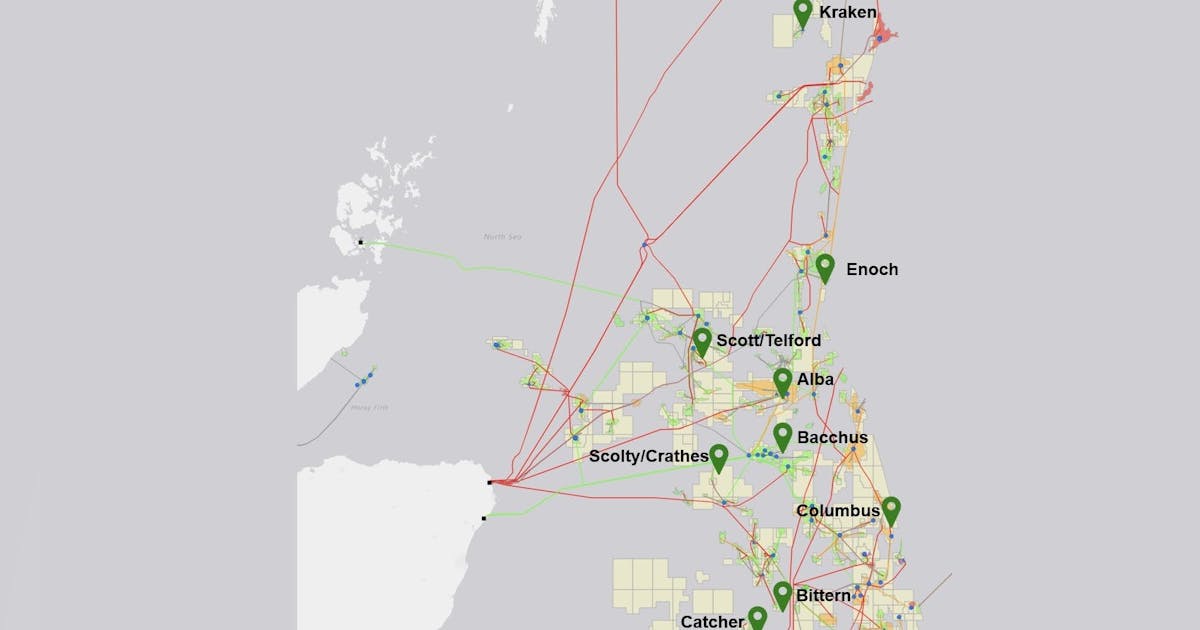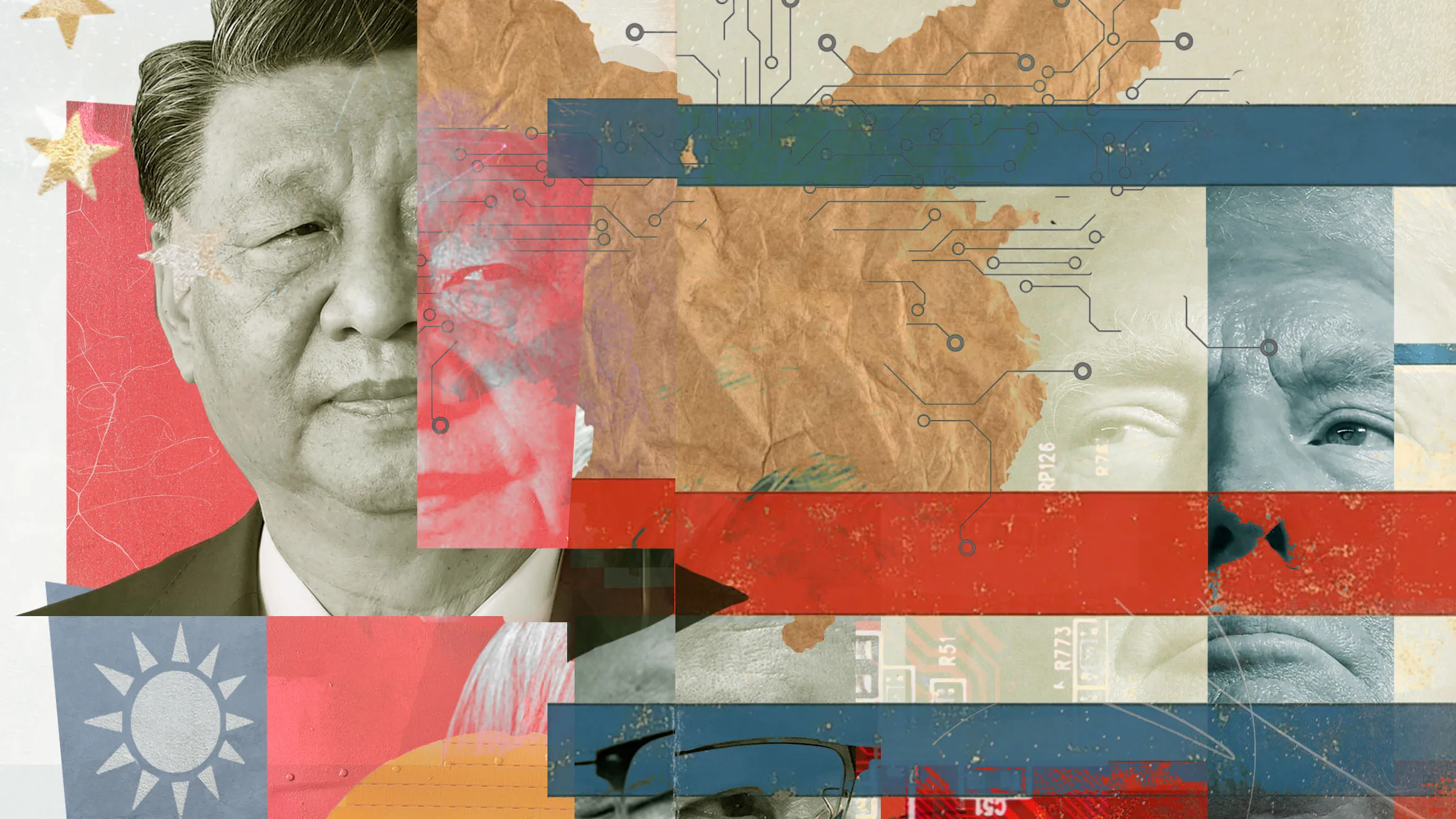
Of course there is randomness in GPT-4o’s outputs. After all, the model samples from a probability distribution when choosing each token. But what I didn’t understand was that those very probabilities themselves are not deterministic. Even with consistent prompts, fixed seeds, and temperature set to zero, GPT-4o still introduces subtle, frustrating randomness.
There’s no fix for this, and it might not even be something OpenAI could fix if they wanted to, just so we’re clear up front about where this article is headed. Along the way, we’ll examine all the sources of randomness in GPT-4o output, which will require us to break down the sampling process to a low level. We’ll point at the issue—the probabilities vary—and critically examine OpenAI’s official guidance on determinism.
First, though, let’s talk about why determinism matters. Determinism means that the same input always produces the same output, like a mathematical function. While LLM creativity is often desirable, determinism serves crucial purposes: researchers need it for reproducible experiments, developers for verifying reported results, and prompt engineers for debugging their changes. Without it, you’re left wondering if different outputs stem from your tweaks or just the random number generator’s mood swings.
Flipping a coin
We’re going to keep things extremely simple here and prompt the most recent version of GPT-4o (gpt-4o-2024-08-06 in the API) with this:
Flip a coin. Return Heads or Tails only.
Flipping a coin with LLMs is a fascinating topic in itself (see for example Van Koevering & Kleinberg, 2024 in the references), but here, we’ll use it as a simple binary question with which to explore determinism, or the lack thereof.
This is our first attempt.
import os
from openai import OpenAI
client = OpenAI(api_key=os.getenv('OPENAI_API_KEY'))
prompt = 'Flip a coin. Return Heads or Tails only.'
response = client.chat.completions.create(
model='gpt-4o-2024-08-06',
messages=[{'role': 'user', 'content': prompt}],
)
print(response.choices[0].message.content)Running the code gave me Heads. Maybe you’ll get Tails, or if you’re really lucky, something far more interesting.
The code first initializes an OpenAI client with an API key set in the environment variable OPENAI_API_KEY (to avoid sharing billing credentials here). The main action happens with client.chat.completions.create, where we specify the model to use and send the prompt (as a part of a very simple conversation named messages) to the server. We get an object called response back from the server. This object contains a lot of information, as shown below, so we need to dig into it to extract GPT-4o’s actual response to the message, which is response.choices[0].message.content.
>>> response
ChatCompletion(id=’chatcmpl-B48EqZBLfUWtp9H7cwnchGTJbBDwr’, choices=[Choice(finish_reason=’stop’, index=0, logprobs=None, message=ChatCompletionMessage(content=’Heads’, refusal=None, role=’assistant’, audio=None, function_call=None, tool_calls=None))], created=1740324680, model=’gpt-4o-2024-08-06′, object=’chat.completion’, service_tier=’default’, system_fingerprint=’fp_eb9dce56a8′, usage=CompletionUsage(completion_tokens=2, prompt_tokens=18, total_tokens=20, completion_tokens_details=CompletionTokensDetails(accepted_prediction_tokens=0, audio_tokens=0, reasoning_tokens=0, rejected_prediction_tokens=0), prompt_tokens_details=PromptTokensDetails(audio_tokens=0, cached_tokens=0)))
Now let’s flip the coin ten times. If this were a real, fair coin, of course, we would expect roughly equal heads and tails over time thanks to the law of large numbers. But GPT-4o’s coin doesn’t work quite like that.
import os
from openai import OpenAI
client = OpenAI(api_key=os.getenv('OPENAI_API_KEY'))
prompt = 'Flip a coin. Return Heads or Tails only.'
for _ in range(10):
response = client.chat.completions.create(
model='gpt-4o-2024-08-06',
messages=[{'role': 'user', 'content': prompt}],
)
print(response.choices[0].message.content)Running this code gave me the following output, although you might get different output, of course.
Heads
Heads
Heads
Heads
Heads
Heads
Tails
Heads
Heads
Heads
GPT-4o’s coin is clearly biased, but so are humans. Bar-Hillel, Peer, and Acquisti (2014) found that people flipping imaginary coins choose “heads” 80% of the time. Maybe GPT-4o learned that from us. But whatever the reason, we’re just using this simple example to explore determinism.
Just how biased is GPT-4o’s coin?
Let’s say we wanted to know precisely what percentage of GPT-4o coin flips land Heads.
Rather than the obvious (but expensive) approach of flipping it a million times, there’s a smarter way. For classification tasks with a small set of possible answers, we can extract token probabilities instead of generating full responses. With the right prompt, the first token carries all the necessary information, making these API calls incredibly cheap: around 30,000 calls per dollar, since each requires just 18 (cached) input tokens and 1 output token.
OpenAI gives us (natural) log probabilities. These are called logprobs in the code, and we convert them to regular probabilities by exponentiation. (We’ll discuss temperature soon, but note that exponentiating logprobs directly like this corresponds to a temperature setting of 1.0, and is how we calculate probabilities throughout this article). OpenAI lets us request logprobs for the top 20 most likely tokens, so we do that.
import os
import math
from openai import OpenAI
from tabulate import tabulate
client = OpenAI(api_key=os.getenv('OPENAI_API_KEY'))
prompt = 'Flip a coin. Return Heads or Tails only.'
response = client.chat.completions.create(
model='gpt-4o-2024-08-06',
max_tokens=1,
logprobs=True,
top_logprobs=20,
messages=[{'role': 'user', 'content': prompt}],
)
logprobs_list = response.choices[0].logprobs.content[0].top_logprobs
data = []
total_pct = 0.0
for logprob_entry in logprobs_list:
token = logprob_entry.token
logprob = logprob_entry.logprob
pct = math.exp(logprob) * 100 # Convert logprob to a percentage
total_pct += pct
data.append([token, logprob, pct])
print(
tabulate(
data,
headers=["Token", "Log Probability", "Percentage (%)"],
tablefmt="github",
floatfmt=("s", ".10f", ".10f")
)
)
print(f"nTotal probabilities: {total_pct:.6f}%")If you run this, you’ll get something like the following output, but actual numbers will vary.
| Token | Log Probability | Percentage (%) |
|———–|——————-|——————|
| Heads | -0.0380541235 | 96.2660836887 |
| T | -3.2880542278 | 3.7326407467 |
| Sure | -12.5380544662 | 0.0003587502 |
| Head | -12.7880544662 | 0.0002793949 |
| Tail | -13.2880544662 | 0.0001694616 |
| Certainly | -13.5380544662 | 0.0001319768 |
| “T | -14.2880544662 | 0.0000623414 |
| I’m | -14.5380544662 | 0.0000485516 |
| heads | -14.5380544662 | 0.0000485516 |
| Heads | -14.9130544662 | 0.0000333690 |
| ” | -15.1630544662 | 0.0000259878 |
| _heads | -15.1630544662 | 0.0000259878 |
| tails | -15.5380544662 | 0.0000178611 |
| HEAD | -15.7880544662 | 0.0000139103 |
| TAIL | -16.2880535126 | 0.0000084370 |
| T | -16.7880535126 | 0.0000051173 |
| “` | -16.7880535126 | 0.0000051173 |
| Here’s | -16.9130535126 | 0.0000045160 |
| I | -17.2880535126 | 0.0000031038 |
| As | -17.2880535126 | 0.0000031038 |Total probabilities: 99.999970%
Looking at these probabilities, we see Heads at ≈96% and T at ≈4%. Our prompt is doing pretty well at constraining the model’s responses. Why T and not Tails? This is the tokenizer splitting Tails into T + ails, while keeping Heads as one piece, as we can see in this Python session:
>>> import tiktoken
>>> encoding = tiktoken.encoding_for_model("gpt-4o-2024-08-06")
>>> encoding.encode('Tails')
[51, 2196]
>>> encoding.decode([51])
'T'
>>> encoding.encode('Heads')
[181043]These probabilities are not deterministic
Run the code to display the probabilities for the top 20 tokens again, and you’ll likely get different numbers. Here’s what I got on a second running.
| Token | Log Probability | Percentage (%) |
|———–|——————-|——————|
| Heads | -0.0110520627 | 98.9008786933 |
| T | -4.5110521317 | 1.0986894433 |
| Certainly | -14.0110521317 | 0.0000822389 |
| Head | -14.2610521317 | 0.0000640477 |
| Sure | -14.2610521317 | 0.0000640477 |
| Tail | -14.3860521317 | 0.0000565219 |
| heads | -15.3860521317 | 0.0000207933 |
| Heads | -15.5110521317 | 0.0000183500 |
| “` | -15.5110521317 | 0.0000183500 |
| _heads | -15.6360521317 | 0.0000161938 |
| tails | -15.6360521317 | 0.0000161938 |
| I’m | -15.8860521317 | 0.0000126117 |
| “T | -15.8860521317 | 0.0000126117 |
| As | -16.3860511780 | 0.0000076494 |
| ” | -16.5110511780 | 0.0000067506 |
| HEAD | -16.6360511780 | 0.0000059574 |
| TAIL | -16.7610511780 | 0.0000052574 |
| Here’s | -16.7610511780 | 0.0000052574 |
| “ | -17.1360511780 | 0.0000036133 |
| T | -17.6360511780 | 0.0000021916 |Total probabilities: 99.999987%
In their cookbook, OpenAI offers the following advice on receiving “mostly identical” outputs:
If the
seed, request parameters, andsystem_fingerprintall match across your requests, then model outputs will mostly be identical. There is a small chance that responses differ even when request parameters andsystem_fingerprintmatch, due to the inherent non-determinism of our models.
They also give “mostly identical” advice in the reproducible outputs section of their documentation.
The request parameters that could affect randomness are temperature and seed. OpenAI also suggests we track system_fingerprint, because differences here might cause differences in output. We’ll examine each of these below, but spoiler: none of them will fix or even explain this non-determinism.
Temperature, and why it won’t fix this
Temperature controls how random the model’s responses are. Low temperatures (1.5) produce gibberish. Temperature is often called the “creativity parameter”, but this is an oversimplification. In their analysis, Peeperkorn, Kouwenhoven, Brown, and Jordanous (2024) evaluated LLM outputs across four dimensions of creativity: novelty (originality), coherence (logical consistency), cohesion (how well the text flows), and typicality (how well it fits expected patterns). They observed that:
temperature is weakly correlated with novelty, and unsurprisingly, moderately correlated with incoherence, but there is no relationship with either cohesion or typicality.
But, this is beside the point for coin flipping. Under the hood, the log probabilities are divided by the temperature before they’re renormalized and exponentiated to be converted to probabilities. This creates a non-linear effect: temperature=0.5 squares the probabilities, making likely tokens dominate, while temperature=2.0 applies a square root, flattening the distribution.
What about temperature=0.0? Instead of breaking math dividing by zero, the model simply picks the highest-probability token. Sounds deterministic, right? Not quite. Here’s the catch: temperature only comes into play after the log probabilities are computed, when we convert them to probabilities.
In summary: if the logprobs aren’t deterministic, setting temperature to 0.0 won’t make the model deterministic.
In fact, since we’re just asking the model for the raw logprobs directly rather than generating full responses, the temperature setting doesn’t come into play in our code at all.
Seeds, and why they won’t fix this
After temperature is used to compute probabilities, the model samples from these probabilities to pick the next token. OpenAI gives us a little control over the sampling process by letting us set the seed parameter for the random number generator. In an ideal world, setting a seed would give us determinism at any temperature. But seeds only affect sampling, not the log probabilities before sampling.
In summary: if the logprobs aren’t deterministic, setting a seed won’t make the model deterministic.
In fact, seed only matters with non-zero temperatures. With temperature=0.0, the model is always choosing the highest probability token regardless of the seed. Again, since we’re just asking the model for the raw logprobs directly rather than sampling, neither of these settings can help us achieve determinism.
System fingerprints, our last hope
The system_fingerprint identifies the current combination of model weights, infrastructure, and configuration options in OpenAI’s backend. At least, that’s what OpenAI tells us. Variations in system fingerprints might indeed explain variations in logprobs. Except that they don’t, as we will verify below.
Nothing can get you determinism
Let’s confirm what we’ve been building toward. We’ll run the same request 10 times with every safeguard in place. Even though neither of these parameters should matter for what we’re doing, you can never be too safe, so we’ll set temperature=0.0 and seed=42. And to see if infrastructure differences explain our varying logprobs, we’ll print system_fingerprint. Here’s the code:
import os
import math
from openai import OpenAI
from tabulate import tabulate
from tqdm import tqdm
client = OpenAI(api_key=os.getenv('OPENAI_API_KEY'))
prompt = 'Flip a coin. Return Heads or Tails only.'
data = []
for _ in tqdm(range(10), desc='Generating responses'):
response = client.chat.completions.create(
model='gpt-4o-2024-08-06',
temperature=0.0,
seed=42,
max_tokens=1,
logprobs=True,
top_logprobs=20,
messages=[{'role': 'user', 'content': prompt}],
)
fingerprint = response.system_fingerprint
logprobs_list = response.choices[0].logprobs.content[0].top_logprobs
heads_logprob = next(
entry.logprob for entry in logprobs_list if entry.token == 'Heads'
)
pct = math.exp(heads_logprob) * 100
data.append([fingerprint, heads_logprob, f"{pct:.10f}%"])
headers = ["Fingerprint", "Logprob", "Probability"]
print(tabulate(data, headers=headers, tablefmt="pipe"))Running this 10 times, here are the logprobs and probabilities for the token Heads:
| Fingerprint | Logprob | Probability |
|—————|————|—————-|
| fp_f9f4fb6dbf | -0.0380541 | 96.2660836887% |
| fp_f9f4fb6dbf | -0.0380541 | 96.2660836887% |
| fp_f9f4fb6dbf | -0.0380541 | 96.2660836887% |
| fp_f9f4fb6dbf | -0.0380541 | 96.2660836887% |
| fp_f9f4fb6dbf | -0.160339 | 85.1854886858% |
| fp_f9f4fb6dbf | -0.0380541 | 96.2660836887% |
| fp_f9f4fb6dbf | -0.0110521 | 98.9008786933% |
| fp_f9f4fb6dbf | -0.0380541 | 96.2660836887% |
| fp_f9f4fb6dbf | -0.0380541 | 96.2660836887% |
| fp_f9f4fb6dbf | -0.0380541 | 96.2660836887% |
Mixture-of-experts makes determinism impossible
OpenAI is decidedly not open about the architecture behind GPT-4o. However, it’s widely believed that GPT-4o uses a mixture-of-experts (MoE) architecture with either 8 or 16 experts.
According to a paper by Google DeepMind researchers Puigcerver, Riquelme, Mustafa, and Houlsby (hat tip to user elmstedt on the OpenAI forum), mixture-of-experts architectures may add an unavoidable level of non-determinism:
Under capacity constraints, all Sparse MoE approaches route tokens in groups of a fixed size and enforce (or encourage) balance within the group. When groups contain tokens from different sequences or inputs, these tokens compete for available spots in expert buffers. Therefore, the model is no longer deterministic at the sequence-level, but only at the batch-level.
In other words, when your prompt (a sequence of tokens, in the quote above) reaches OpenAI’s servers, it gets batched with a group of other prompts (OpenAI isn’t open about how many other prompts). Each prompt in the batch is then routed to an “expert” within the model. However, since only so many prompts can be routed to the same expert, the expert your prompt gets routed to will depend on all the other prompts in the batch.
This “competition” for experts introduces a real-world randomness completely beyond our control.
Non-determinism beyond mixture-of-experts
While non-determinism may be inherent to real-world mixture-of-experts models, that does not seem to be the only source of non-determinism in OpenAI’s models.
Making a few changes to our code above (switching to gpt-3.5-turbo-0125, looking for the token He since GPT-3.5’s tokenizer splits “Heads” differently, and ignoring system_fingerprint because this model doesn’t have it) reveals that GPT-3.5-turbo also exhibits non-deterministic logprobs:
| Logprob | Probability |
|————-|—————-|
| -0.00278289 | 99.7220983436% |
| -0.00415331 | 99.5855302068% |
| -0.00258838 | 99.7414961980% |
| -0.00204034 | 99.7961735289% |
| -0.00240277 | 99.7600117933% |
| -0.00204034 | 99.7961735289% |
| -0.00204034 | 99.7961735289% |
| -0.00258838 | 99.7414961980% |
| -0.00351419 | 99.6491976144% |
| -0.00201214 | 99.7989878007% |
No one is claiming that GPT-3.5-turbo uses a mixture-of-experts architecture. Thus, there must be additional factors beyond mixture-of-experts contributing to this non-determinism.
What 10,000 GPT-4o coin flip probabilities tell us
To better understand the patterns and magnitude of this non-determinism, I conducted a more extensive experiment with GPT-4o, performing 10,000 “coin flips” while recording the probability assigned to “Heads” in each case.
The results reveal something fascinating. Across 10,000 API calls with identical parameters, GPT-4o produced not just a few different probability values, but 42 distinct probabilities. If the mixture-of-experts hypothesis were the complete explanation for non-determinism in GPT-4o, we might expect to see one distinct probability for each expert. But GPT-4o is believed to have either 8 or 16 experts, not 42.
In the output below, I clustered these probabilities, ensuring that each cluster was separated from the others by 0.01 (as a raw percentage). This groups the output into 12 clusters.
Probability Count Fingerprints
——————————————————————
85.1854379113% 5 fp_eb9dce56a8, fp_f9f4fb6dbf
85.1854455275% 74 fp_eb9dce56a8, fp_f9f4fb6dbf
85.1854886858% 180 fp_eb9dce56a8, fp_f9f4fb6dbf
——————————————————————
88.0662448207% 31 fp_eb9dce56a8, fp_f9f4fb6dbf
88.0678628883% 2 fp_f9f4fb6dbf
——————————————————————
92.3997629747% 1 fp_eb9dce56a8
92.3997733012% 4 fp_eb9dce56a8
92.3997836277% 3 fp_eb9dce56a8
——————————————————————
92.4128943690% 1 fp_f9f4fb6dbf
92.4129143363% 21 fp_eb9dce56a8, fp_f9f4fb6dbf
92.4129246643% 8 fp_eb9dce56a8, fp_f9f4fb6dbf
——————————————————————
93.9906837191% 4 fp_eb9dce56a8
——————————————————————
95.2569999350% 36 fp_eb9dce56a8
——————————————————————
96.2660836887% 3391 fp_eb9dce56a8, fp_f9f4fb6dbf
96.2661285161% 2636 fp_eb9dce56a8, fp_f9f4fb6dbf
——————————————————————
97.0674551052% 1 fp_eb9dce56a8
97.0674778863% 3 fp_eb9dce56a8
97.0675003058% 4 fp_eb9dce56a8
97.0675116963% 1 fp_eb9dce56a8
97.0680739932% 19 fp_eb9dce56a8, fp_f9f4fb6dbf
97.0681293191% 6 fp_eb9dce56a8, fp_f9f4fb6dbf
97.0681521003% 74 fp_eb9dce56a8, fp_f9f4fb6dbf
97.0682421405% 4 fp_eb9dce56a8
——————————————————————
97.7008960695% 1 fp_f9f4fb6dbf
97.7011122645% 3 fp_eb9dce56a8
97.7011462953% 3 fp_eb9dce56a8
97.7018178132% 1 fp_eb9dce56a8
——————————————————————
98.2006069902% 426 fp_eb9dce56a8, fp_f9f4fb6dbf
98.2006876548% 6 fp_f9f4fb6dbf
98.2007107019% 1 fp_eb9dce56a8
98.2009525133% 5 fp_eb9dce56a8
98.2009751945% 1 fp_eb9dce56a8
98.2009867181% 1 fp_eb9dce56a8
——————————————————————
98.5930987656% 3 fp_eb9dce56a8, fp_f9f4fb6dbf
98.5931104270% 235 fp_eb9dce56a8, fp_f9f4fb6dbf
98.5931222721% 4 fp_eb9dce56a8, fp_f9f4fb6dbf
98.5931340253% 9 fp_eb9dce56a8
98.5931571644% 159 fp_eb9dce56a8, fp_f9f4fb6dbf
98.5931805790% 384 fp_eb9dce56a8
——————————————————————
98.9008436920% 95 fp_eb9dce56a8, fp_f9f4fb6dbf
98.9008550214% 362 fp_eb9dce56a8, fp_f9f4fb6dbf
98.9008786933% 1792 fp_eb9dce56a8, fp_f9f4fb6dbf
(With a threshold of 0.001 there are 13 clusters, and with a threshold of 0.0001 there are 17 clusters.)
As the chart above demonstrates, this multitude of results cannot be explained by system_fingerprint values. Across all 10,000 calls, I received only two different system fingerprints: 4488 results with fp_f9f4fb6dbf and 5512 with fp_eb9dce56a8, and for the most part the two system fingerprints returned the same sets probabilities, rather than each fingerprint producing its own distinct set of probabilities.
It could be that these 12 clusters of probabilities represent 12 different experts. Even assuming that, the variations within the clusters remain puzzling. These don’t seem likely to be simple rounding errors, because they are too systematic and consistent. Take the giant cluster at around 96.266% with two distinct probabilities representing over half of our coin flips. The difference between these two probabilities, 0.0000448274%, is tiny but persistent.
Conclusion: Non-determinism is baked in
There is an underlying randomness in the log probabilities returned by all currently available non-thinking OpenAI models: GPT-4o, GPT-4o-mini, and the two flavors of GPT-3.5-turbo. Because this non-determinism is baked into the log probabilities, there’s no way for a user to get around it. Temperature and seed values have no effect, and system fingerprints don’t explain it.
While mixture-of-experts architectures inherently introduce some randomness in the competition for experts, the non-determinism in GPT-4o seems to go far beyond this, and the non-determinism in GPT-3.5-turbo can’t be explained by this at all, because GPT-3.5-turbo isn’t a mixture-of-experts model.
While we can’t verify this claim any more because the model isn’t being served, this behaviour wasn’t seen with GPT-3, according to user _j on the OpenAI forum:
It is a symptom that was not seen on prior GPT-3 AI models where across hundreds of trials to investigate sampling, you never had to doubt that logprobs would be the same. Even if you found a top-2 answer that returned exactly the same logprob value via the API, you would never see them switch position or return different values.
This suggests that whatever is causing this randomness first emerged in either GPT-3.5 or GPT-3.5-turbo.
But regardless of when it emerged, this non-determinism is a serious obstacle to understanding these models. If you want to study a model—how it generalizes, how it biases responses, how it assigns probabilities to different tokens—you need consistency. but as we’ve seen, even when we lock down every knob OpenAI lets us touch, we still can’t get an answer to the simplest possible question: “what is the probability that GPT-4o says a coin lands heads?”
Worse, while mixture-of-experts explains some of this non-determinism, there are clearly other, hidden sources of randomness that we can’t see, control, or understand. In an ideal world, the API would provide more transparency by telling us which expert processed our request or by offering additional parameters to control this routing process. Without such visibility, we’re left guessing at the true nature of the variability.
References
Bar-Hillel, M., Peer, E., & Acquisti, A. (2014). “Heads or tails?” – A reachability bias in binary choice. Journal of Experimental Psychology: Learning, Memory, and Cognition, 40(6), 1656–1663. https://doi.org/10.1037/xlm0000005.
Peeperkorn, M., Kouwenhoven, T., Brown, D., & Jordanous, A. (2024). Is temperature the creativity parameter of Large Language Models?. In The 15th International Conference on Computational Creativity (ICCC’24). arXiv:2405.00492.
Puigcerver, J., Riquelme, C., Mustafa, B., & Houlsby, N. (2024). From sparse to soft mixtures of experts. In The Twelfth International Conference on Learning Representations (ICLR 2024). https://openreview.net/forum?id=jxpsAj7ltE. arXiv:2308.00951.Van Koevering, K., & Kleinberg, J. (2024). How random is random? Evaluating the Randomness and humanness of LLMs’ coin flips. arXiv:2406.00092.























